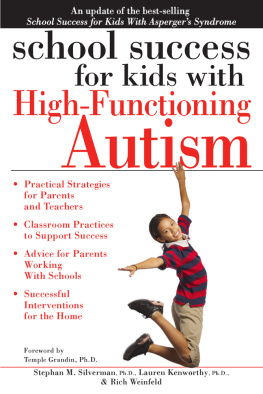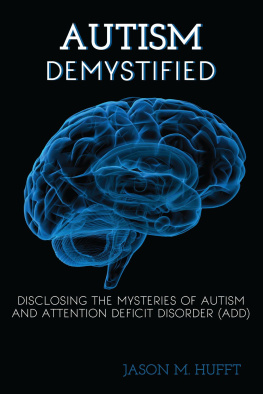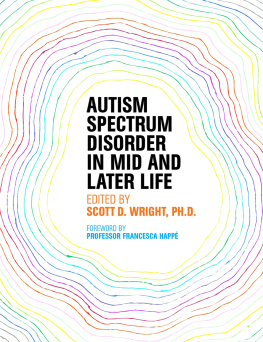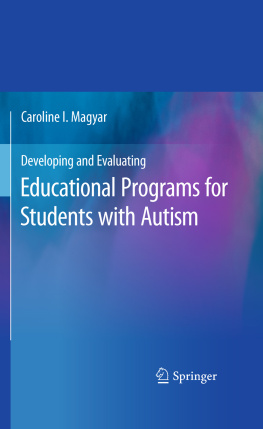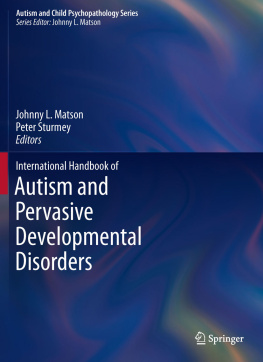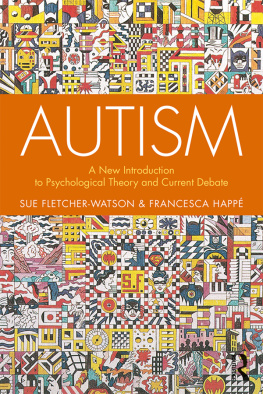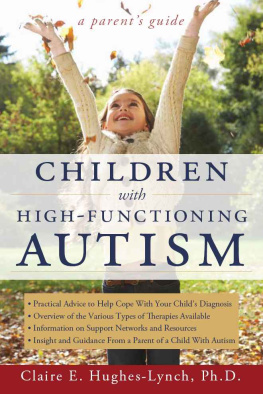Cover

| title | : | The Development of Autism : Perspectives From Theory and Research |
| author | : | Burack, Jacob A. |
| publisher | : | Lawrence Erlbaum Associates, Inc. |
| isbn10 | asin | : | 0805832459 |
| print isbn13 | : | 9780805832457 |
| ebook isbn13 | : | 9780585384931 |
| language | : | English |
| subject | Autism--Congresses, Autism--Etiology--Congresses. |
| publication date | : | 2001 |
| lcc | : | RC553.A88D48 2001eb |
| ddc | : | 616.89/82 |
| subject | : | Autism--Congresses, Autism--Etiology--Congresses. |
Page i
THE DEVELOPMENT OF AUTISM:
PERSPECTIVES FROM THEORY
AND RESEARCH
Page ii
This page intentionally left blank
Page iii
THE DEVELOPMENT OF AUTISM:
PERSPECTIVES FROM THEORY
AND RESEARCH
Edited by
Jacob A. Burack
McGill University, Montreal, Quebec, Canada
Tony Charman
Institute of Child Health, London, England
Nurit Yirmiya
Hebrew University of Jerusalem, Israel
Philip R. Zelazo
McGill University, Montreal, Quebec, Canada

Page iv
Copyright 2001 by Lawrence Erlbaum Associates, Inc.
All rights reserved. No part of this book may be reproduced in any form, by
photostat, microfilm, retrieval system, or any other means, without the prior
written permission of the publisher.
Lawrence Erlbaum Associates, Inc., Publishers
10 Industrial Avenue
Mahwah, New Jersey 07430-2262
Cover design by Kathryn Houghtaling Lacey
Library of Congress Cataloging-in-Publication Data
The development of autism : perspectives from theory and research / Jacob A.
Burack [et al.].
p. cm.
This volume is the product of a symposium on the development of autism that
was presented at the Fifth European Congress of Psychology in Dublin in
August 1997.
Includes bibliographical references and index.
ISBN 0-8058-3245-9 (cloth: alk. paper)
1. Autism--Congresses. 2. Autism--Etiology--Congresses. I. Burack, Jacob A.
II. European Congress of Psychology : (5th : 1997 : Dublin, Ireland)
| RCC553.A88 D48 2001 |
| 616.89'82--dc21 | 00-062298 |
Books published by Lawrence Erlbaum Associates are printed on acid-free paper,
and their bindings are chosen for strength and durability
Printed in the United States of America
10 9 8 7 6 5 4 3 2 1
Page v
This page intentionally left blank
Page vi

Page vii
Dedication
The editors of this volume have graciously decided to dedicate it to the memory of Lisa Capps, a productive and imaginative researcher of childhood autism, who died in February 2000. The following paragraphs, summarizing Lisas own view of her accomplishments in the field of autism and her plans for the future, were written at the end of November 1995 when she applied for an academic position at the University of California at Berkeley.
My thinking has been shaped by dialogue between Clinical and Developmental Psychology from the start; I became involved in research as an undergraduate at Stanford University, where I worked with Dr. Anne Fernald on studies of mothers use of intonation in communicating with infants. Concerned about how such communication might be altered in distressed relationships, I sought clinical experience with mothers and infants in a therapeutic nursery at Mt. Sinai Medical Center in New York City. At the same time I worked as a clinical research assistant at New York Psychiatric Institute, and on studies of narrative with Drs. Jerome Bruner and Carol Feldman at New York University.
As a graduate student in Clinical Psychology at UCLA, my research with Dr. Marian Sigman on emotional relatedness and communication has challenged persistent notions about the nature of autistic impairment, for example, that autistic children are affectively flat and unable to form secure attachment relationships with caregivers. This work has significant clinical implications and offers insight into attachment theory. Additional research on high-functioning adolescents with autism suggested that they were
Page viii
surprisingly able to identify a broad range of affective expressions and to recount times in which they had experienced various emotions. In contrast to non-autistic comparison subjects who described their emotional experiences with apparent ease, the task appeared laborious for those with autism, particularly in relation to complex emotions. Because task difficulty was negatively correlated with IQ, I became interested in the relationship between intellectual ability and the other aspects of social and emotional understanding. In another study with the same sample we found IQ was positively correlated with the ability to identify the emotions of videotaped protagonists and with parent reports of socially adaptive behaviors, but negatively correlated with adolescents own perceptions of their social competence. These results suggest that autistic individuals with advanced intellectual abilities may have greater social and emotional understanding, engendering a heightened awareness of their limitations.
Dr. Sigman and I recently completed a book, Autism, A Developmental Perspective (1997). This book is unique in that it views autism through the lens of developmental psychopathology. Journeying from infancy through middle childhood and adolescence to adulthood, we demonstrate that understanding autism requires locating behavioral characteristics within a developmental frame, and that efforts to unravel the mysteries of autism enhance knowledge of normal development. We propose that autistic children suffer from deficits in social understanding that emerge in early infancy, and illuminate how these deficits organize the unfolding pattern of strengths and weaknesses displayed by individuals with autism over the course of their lives.
As evident from these paragraphs, Lisa was a magical writer whose work was embued with compassion and theoretical understanding of the highest order. She went on in her letter of application to outline her research goals in autism, Adopting a developmental psychopathological perspective, I plan to develop a longitudinal research program that combines quantitative methods with naturalistic observation and discourse analysis to examine how linguistic practices, in particular, narrative style, relate to joint attention, social referencing, emotional understanding, and theory of mind among children with autism. She did go on to form a research group at UC Berkeley conducting studies of narrative in children with autism, elaborating on the kinds of discourse and conversation analysis she learned from Dr. Elinor Ochs as well as methodologies borrowed from Dr. Helen Tager-Flusberg and Dr. Judy Reilly. In two papers published recently, she reported that children with autism were
Next page

